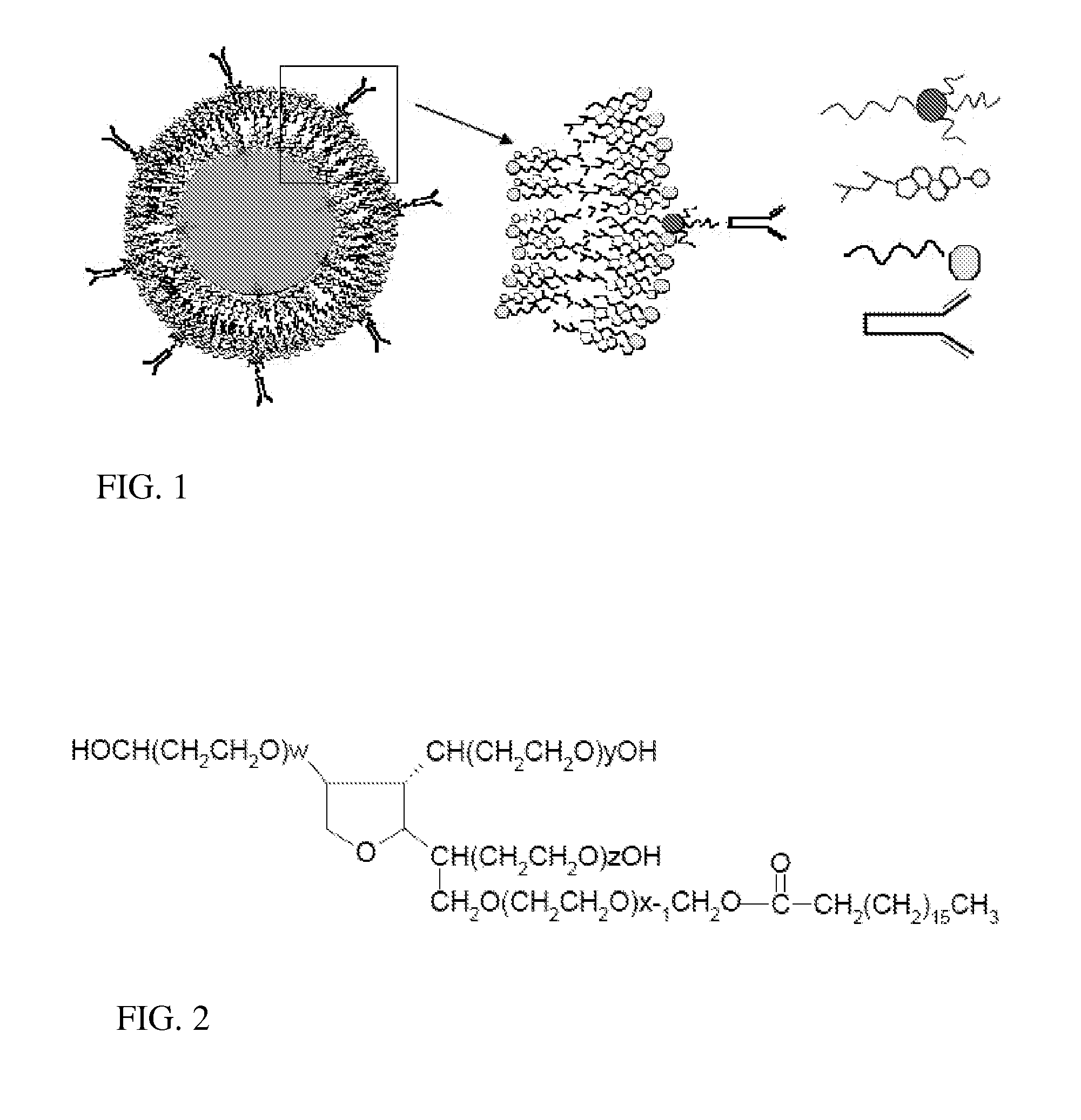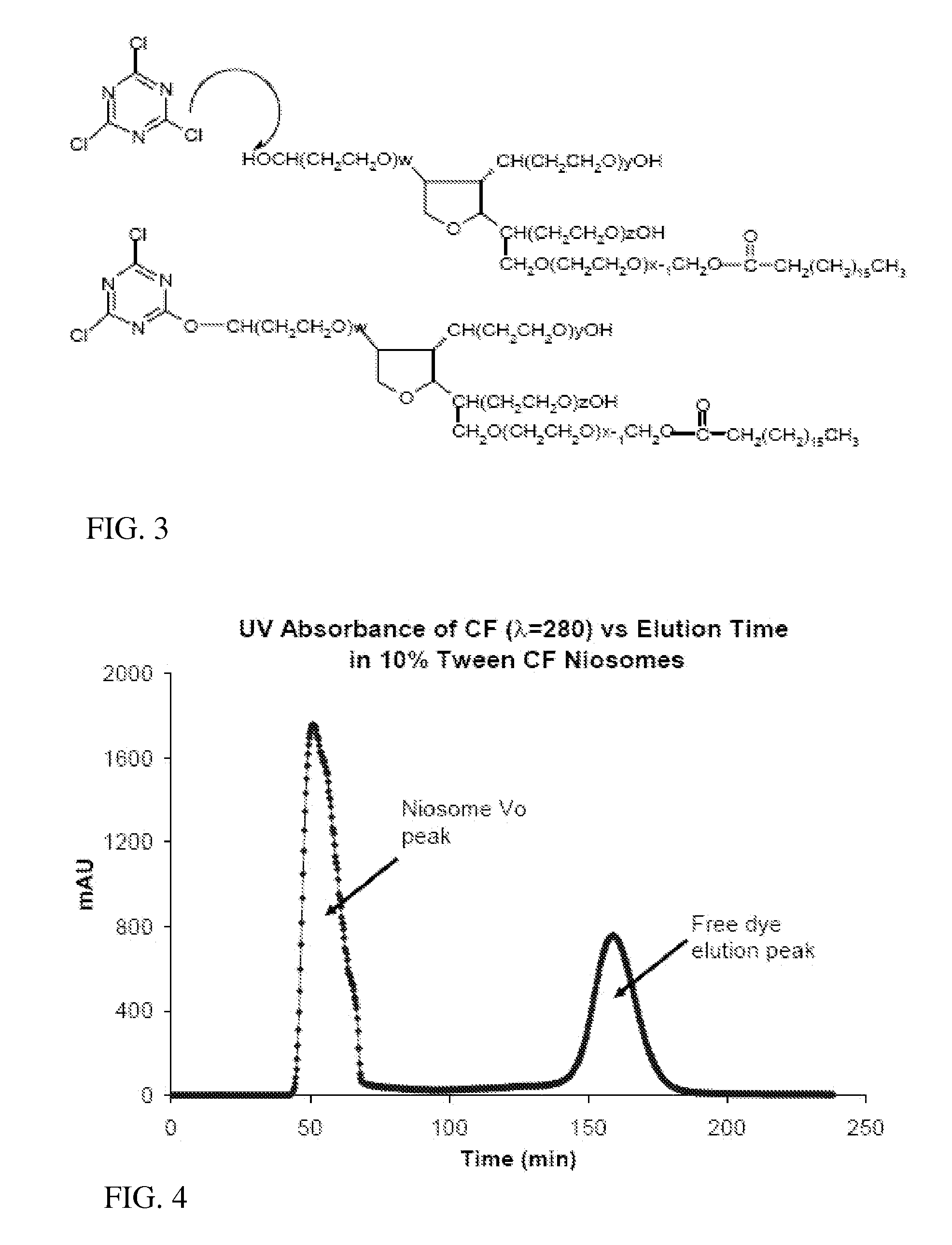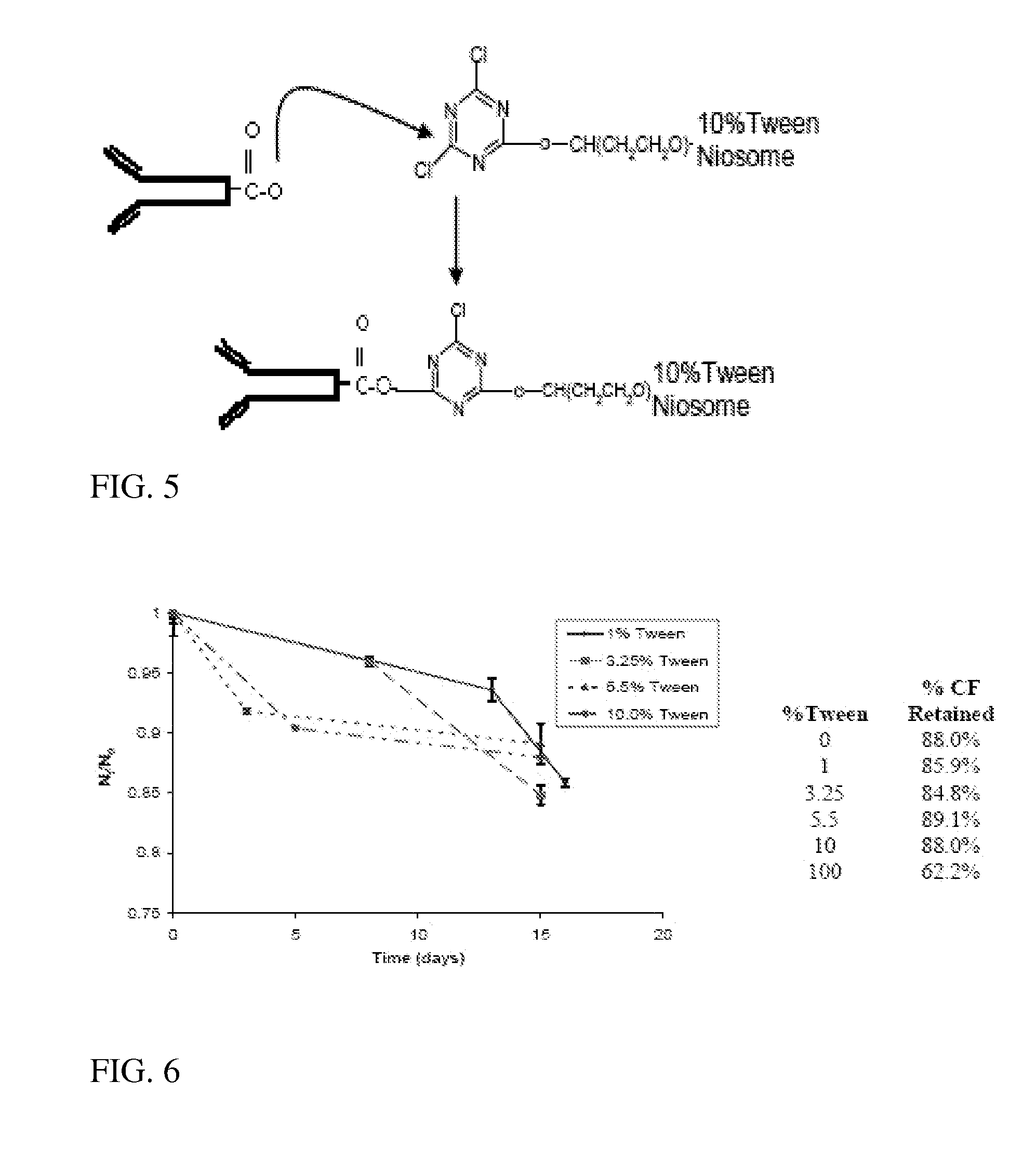Immunotargeting of Nonionic Surfactant Vesicles
a technology of surfactant vesicles and immunotargeting, which is applied in the field of niosomes, can solve the problems of increasing costs, creating toxic side effects, and unable to allow the accumulation of drugs at diseased sites, and achieves the effects of enhancing the life of the therapeutic agent, enhancing the internalization or retention of the bioactive agent, and high target specificity
- Summary
- Abstract
- Description
- Claims
- Application Information
AI Technical Summary
Benefits of technology
Problems solved by technology
Method used
Image
Examples
example 1
[0049] The overall scheme in synthesizing an immunoniosome drug carrier was to first chemically modify a surfactant component, polyoxyethylene sorbitan monostearate (Tween 61), to create a linker, and then to incorporate the surfactant-linker within the niosome membrane, and finally to incubate the functionalized niosomes with monoclonal antibodies to achieve conjugation. Niosomes were synthesized by classical thin-film hydration methods (Yoshioka T, Stemberg B, Florence A T: Preparation And Properties Of Vesicles (Niosomes) Of Sorbitan Monoesters (Span-20, Span-40, Span-60 And Span-80) And A Sorbitan Triester (Span-85). International Journal Of Pharmaceutics 1994;105:1-6) with a mixture of biocompatible sorbitan ester surfactants and cholesterol using both agitation and sonication during the hydration phase. We conjugated the formed vesicles to IM7 antibodies through a novel polyoxyethylene sorbitan monostearate (Tween 61)-cyanuric chloride (CC) linker incorporated in the vesicle m...
example 2
[0058] The effect of the inclusion of a range of small molar percentages of Tween 61 in a Span 60 niosome on vesicle entrapment capacity and membrane stability was evaluated and measured by retention of entrapped dye over time at 4° C. in a PBS suspension. Although Tween 61 niosomes are reported to have a greater entrapment capacity (Manosroi et al., International Journal Of Pharmaceutics, 298, 13-25, 2005), we observed that niosomes whose surfactant component was entirely composed of Tween 61 lost three times more encapsulated dye relative to niosome formulations whose surfactant component was purely Span 60 under static conditions holding cholesterol and DCP molar ratios constant (FIG. 6). This figure also shows that the inclusion of up to 10% by mole of Tween 61 showed no statistical effect on retention.
example 3
[0059] Successful attachment of Alexa Fluor tagged IgGs to PBS containing niosomes is demonstrated by the observance of UV absorbance at 280 nm at the GEC elution void volume in FIG. 7. A very slight signal at 120 ml indicates that few of the AF antibodies were left unbound since the protein and the bound dye would both contribute to the signal at that wavelength. Further demonstration of the conjugation of AF antibodies is seen in the fluorescent image in FIG. 8. The discrete fluorescent spheres appear to be of the same size and relative size distribution of niosomes. These two independent measures indicate successful antibody conjugation of the AF antibodies to non fluorescing niosomes.
PUM
| Property | Measurement | Unit |
|---|---|---|
| Molar ratio | aaaaa | aaaaa |
| Affinity | aaaaa | aaaaa |
| Toxicity | aaaaa | aaaaa |
Abstract
Description
Claims
Application Information
 Login to View More
Login to View More - R&D
- Intellectual Property
- Life Sciences
- Materials
- Tech Scout
- Unparalleled Data Quality
- Higher Quality Content
- 60% Fewer Hallucinations
Browse by: Latest US Patents, China's latest patents, Technical Efficacy Thesaurus, Application Domain, Technology Topic, Popular Technical Reports.
© 2025 PatSnap. All rights reserved.Legal|Privacy policy|Modern Slavery Act Transparency Statement|Sitemap|About US| Contact US: help@patsnap.com



